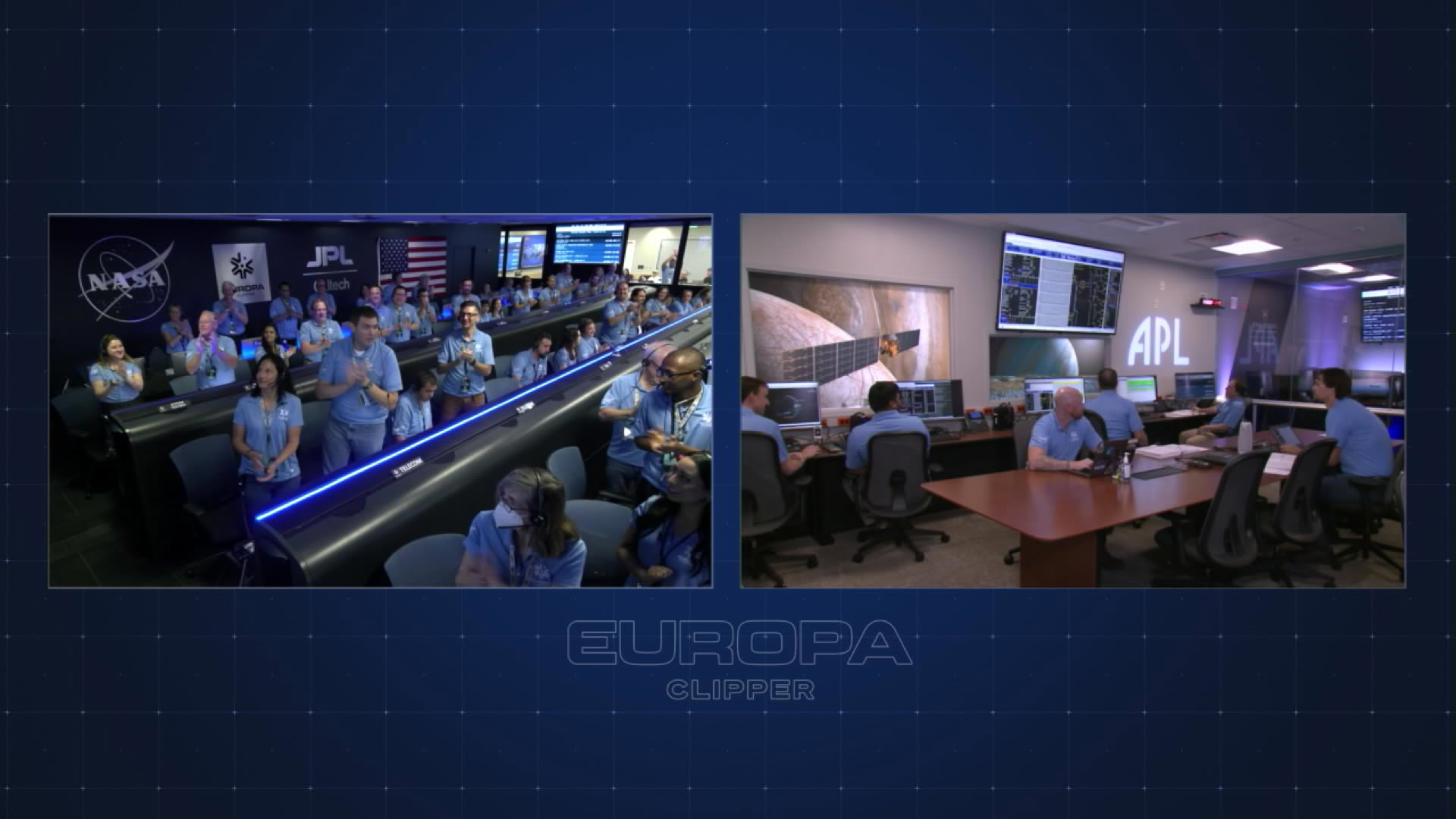
Mission controllers for NASA’s Europa Clipper have received full acquisition of signal from the spacecraft.
NASA’s Europa Clipper will be the first mission to conduct a detailed science investigation of Jupiter’s moon Europa. Scientists believe Europa has a salty ocean beneath its icy crust that potentially could hold the ingredients necessary to sustain life.
The spacecraft, the largest NASA has ever built for a planetary mission, launched on a SpaceX Falcon Heavy rocket from NASA Kennedy’s Launch Complex 39A in Florida at 12:06 p.m. EDT. This will be NASA’s Launch Services Program’s third primary mission launching on a Falcon Heavy rocket.
Jupiter is on average some 480 million miles from Earth — as both planets are in motion around the Sun, the distances between the two vary. Europa Clipper will travel 1.8 billion miles over more than five years to reach the Jovian system in April 2030, using “gravity assists” of two other planets to help it accelerate towards Jupiter. After launch, Europa Clipper will head toward Mars, coming to within 300 to 600 miles of the surface, then slingshot back toward Earth, coming about 2,000 miles from the planet. Through these gravity assists, Europa Clipper will achieve the velocity needed to reach Jupiter in April 2030, when the spacecraft will fire its engines to enter orbit around the solar system’s largest planet.
After it begins orbiting Jupiter, Europa Clipper will spend about a year altering its trajectory to prepare for its first Europa flyby. The spacecraft will then spend about three years soaring past Europa dozens of times and sending data back to Earth. Over the course of the mission, the spacecraft will investigate nearly the entire moon.
